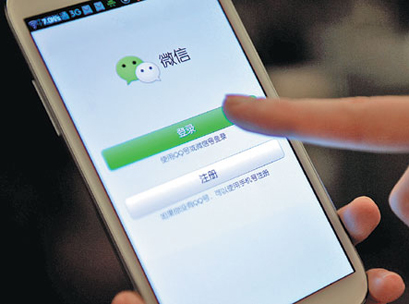Facebook and Twitter may be banned in China, but this has not diminished mainland China’s appetite for social media.
Today’s generation of Chinese are probably more connected than their more technologically experienced peers in the west and are equally as passionate about sharing their shopping experience as their cousins across the domestic border in Hong Kong.
Anson Bailey, principal of business development with KPMG in Hong Kong, says Chinese companies have been quick to embrace the evolution from multi-channel to omni-channel in their retail business models.
They’re linking their physical stores with social networking strategies, and online stores to various third party virtual malls.
Bailey was one of a select group of Asian retail executives to address participants in the Westfield Asian Express Retail Study Tour, a veritable short course on understanding Asia’s burgeoning retail industry.
Jessie Zhang, a senior executive with Hong Kong listed jeweller, Chow Tai Fook, told Westfield Asia Study Tour participants that 70 per cent of Chinese shoppers comment on social media after they purchase online.
In China, they’re most likely to use WeChat or Weibo. In Hong Kong, Facebook or WeChat. The medium does not really matter – it’s the telling social trend that resonated with the tour group – most of whom had not even heard of WeChat before arriving in Shanghai.
WeChat is a phone-based app developed by Ten Cent, which allows friends to chat by text or phone call real time, search for people within their vicinity they might like to meet with, play games, and engage with companies whose official pages they can follow.
WeChat launched in January 2011 and already has more than 550 million registered users, with five people signing up every second.
Importantly, WeChat is almost solely responsible for the success of QR codes in China.
In the US, interest in QR codes is waning, and in Australia it never really caught on, but in China, QR codes are almost everywhere – on fast moving consumer goods, name cards, and advertising banners.
WeChat has a built in scanner, meaning virtually every connected Chinese person with a smartphone can instantly scan a QR code without having to download a specific scanning app (as in Australia).
Social explosion
Social networking is so important to Chow Tai Fook – the world’s largest jewellery retailer with 2000 points of sale – that it has a team of 200 staff in China working in shifts from 8am to midnight to service customers engaging on WeChat and Weibo and supporting enquiries on its e-commerce site.
Another 15 have just been gathered together to start a second such support centre in Hong Kong to meet surging levels of engagement.
Retailers like Chow Tai Fook use WeChat to build awareness of promotions, new product lines, or special events. For example, in February when it released a ‘Band of Elements’ Collection of bracelets, it promoted the event with selfies and discussions pre-launch on WeChat and Weibo.
The range was intended as an online exclusive, but to add traction, it launched the product in one shop. Queues formed at 7am and the store’s allocation of stock sold out by day’s end.
Chow Tai Fook responded by launching a pre-ordering service via WeChat ahead of the online launch on its Tmall store. In three days the collection drew 38,000 views, and daily sales on the e-commerce site were double the normal level. All this from a brand that already has 81,000 consumers visiting its e-commerce sites every day.
The company has also created a character for a jewellery range appearing in a popular online game played on Tmall.
Bailey explains that Hong Kong residents boast a barely believable mobile phone penetration of 237 per cent. Next year there will be an estimated 600 million smartphones in China.
“Everybody has got multiple devices,” he says. Bailey is doing his bit for the percentage: he has an iPad, an iPhone 6 Plus, and a Blackberry.
“Normal guys in China carry about five devices. There is a love affair with all of those mobile devices.”
“The speed of change in China is something quite unbelievable and something I have never seen elsewhere in my time working around the globe,” Bailey says.
“Today, a connected consumer is a creator, critic, producer, spectator, community manager, collaborator. These people are communicating constantly, 24/7 about your brands, about your product.”
They’re also shopping online. Tmall is a giant virtual mall owned by Alibaba, on its way to becoming the world’s biggest company. Its owner, Jack Ma, is already China’s richest man.
Tmall is so successful, that large brands are shelving their goals of exclusivity and joining the crowd. They’ve concluded the damage from not being on Tmall is greater than any downside to being on the same platform as, say, Zara – after all, they share neighbourhoods in shopping centres.
Omni-channel means being where the shopper is, as well as where their brand is, and Chinese shoppers are on Tmall in their droves.
The opportunity
With 618 million connected people, China already has the largest online population in the world.
“But that’s just 46 per cent of its population, so their capacity for growth is enormous,” observed Tammy Learn, VP, global business development with Baidu, China’s version of Google, and the fifth largest search engine on the planet.
Chinese online transactions reached US$301.9 billion in value in 2013 and are expected to surpass $651 billion in 2017. The world’s single biggest internet shopping day, Singles Day, on November 11, saw Alibaba’s sites alone chalk up a record $9.3 billion in sales in just 24 hours.
The growth of online spending in China is advancing at a more rapid pace than any other country in the world. This year, 9.8 per cent of all retail transactions in China will take place online.
Meanwhile, China’s online story is not just about China. You don’t have to be a retailer heading for the mainland to snare a share of the fast growing pie.
Learn says Chinese consumers will spend US$25 billion on overseas websites this year – double last year – seeking security and authenticity they are not necessarily so assured of at home.
Just as significantly, as Chinese travel more they are researching and booking travel online and researching shopping destinations when they arrive at their destination.
In a forgivable product push, Learn says Australian retailers and tourism service providers should be considering promoting their businesses in Chinese on Baidu, just as they consider promotions on Google’s search system, which, by the way, is banned in mainland China.
- For information about the upcoming Westfield Retail World Study Tour, visit the website www.retailstudytour.com






